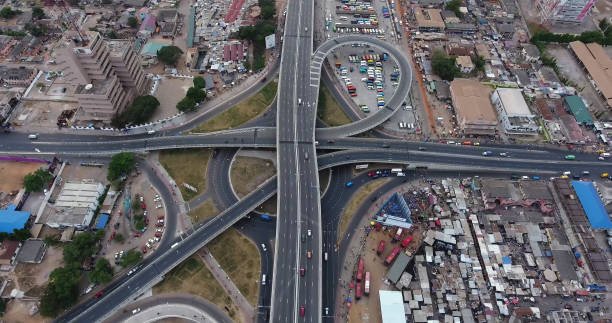On this page, we explore the limitations of financing models of infrastructure in South Africa, as well as other developing countries.
Financing models for infrastructure development in South Africa and other developing countries often come under scrutiny for their efficacy and sustainability. Infrastructure is the backbone of any economy, providing the basic framework that allows other sectors to thrive. However, many challenges arise when trying to finance large-scale projects, especially in developing countries where resources are limited and social-economic conditions are varied. In this article, we’ll explore the limitations of various financing models in South Africa and other developing countries.
The Limitations of Financing Models of Infrastructure in South Africa, as well as other Developing Countries
The limitations of financing models of infrastructure in South Africa, as well as other developing countries, can be explained through several key points. First, there is a heavy reliance on public funding, which often falls short of what is needed for comprehensive infrastructure development. Second, external loans and donor-led initiatives may come with strings attached or not align with the country’s long-term objectives. Third, alternative financing models like venture capital and crowdfunding typically focus on quick returns and are not well-suited for long-term, large-scale projects. Fourth, equity financing may lead to a loss of control over national resources, creating governance issues. Finally, governance and corruption further exacerbate these challenges, as funds are often misallocated or not transparently managed. These limitations collectively make it challenging to secure reliable and effective funding for infrastructure development.
Traditional Government Funding
Limitations
- Insufficient Funds: The traditional model of government funding is usually not enough to cover the costs of large-scale infrastructure projects.
- Corruption and Mismanagement: South African examples like the misallocation of funds in public projects illustrate how corruption can seep into the system.
- Bureaucratic Delays: Government-funded projects are often plagued by bureaucratic red tape, leading to delays and escalating costs.
Public-Private Partnerships (PPP)
Limitations
- Profit Motivation: Companies are generally profit-driven and may not align with social objectives, such as providing affordable services.
- Inequality: PPP models can sometimes exacerbate inequality by focusing on projects that are lucrative rather than those that meet basic needs.
- Complexity and Costs: The negotiation and management of PPP contracts can be complicated and costly.
Foreign Direct Investment (FDI)
Limitations
- Dependency: Relying on foreign investment can make a country susceptible to external economic fluctuations.
- Loss of Control: Local authorities may have to cede control of important assets, which may not always align with national interests.
Developmental Financial Institutions (DFIs)
Limitations
- Limited Reach: DFIs often have strict criteria for investment, which may not cover all types of infrastructure needs.
- Sustainability Concerns: DFIs require a return on investment, which might not be feasible for certain community-focused projects.
Aid and Grants
Limitations
- Unsustainability: Aid and grants are often short-term and may not provide a sustainable solution for infrastructure development.
- Political Strings Attached: Aid often comes with conditions that may force countries into agreements that are not in their best interests.
Examples
Real Examples Illustrating Limitations of Financing Models in South Africa and Other Developing Countries
Traditional Government Funding
- e-Toll System in Gauteng, South Africa: Insufficient funds and public opposition have made this government-funded project highly controversial.
- Nkandla Residence Upgrade, South Africa: The excessive spending on former President Jacob Zuma’s private residence is a clear case of mismanagement and corruption.
Public-Private Partnerships (PPP)
- Gautrain, South Africa: While successful in some respects, the Gautrain project focused on urban centers, thus widening the gap between urban and rural infrastructure.
- Lesotho Highlands Water Project: While successful, this PPP model faced issues of social inequality, as local communities were displaced without sufficient compensation.
Foreign Direct Investment (FDI)
- Dangote Cement in Nigeria: The plant is often cited as a success story of FDI, but it has also been criticized for monopolistic practices, illustrating the loss of local control.
- Standard Gauge Railway, Kenya: Financed by Chinese investment, this project has been criticized for making Kenya too dependent on external economic conditions.
Developmental Financial Institutions (DFIs)
- Development Bank of Southern Africa (DBSA): Despite its financial strength, the DBSA has been criticized for its lack of investment in small community-driven projects.
- African Development Bank’s Rural Water Project: The bank’s focus on ROI limited its scope, overlooking smaller communities in need.
Aid and Grants
- Haiti Earthquake Relief, 2010: Billions were poured into Haiti through aid, yet the country still struggles with basic infrastructure, questioning the sustainability of aid and grants.
- USAID Funding in Afghanistan: Despite extensive financial aid, strings attached to this funding often make it difficult for local governments to allocate resources as per their actual needs.
Municipal Bonds
- City of Johannesburg Municipal Bonds: The City of Johannesburg raised funds through municipal bonds, but the initiative didn’t fully address the deep-rooted issues of urban poverty and inequality.
- Detroit, USA Municipal Bonds: This serves as a cautionary tale for developing countries; the city declared bankruptcy due to its inability to pay off its bonds.
Bank Loans
- ESKOM’s Financial Crisis, South Africa: South Africa’s energy supplier, ESKOM, took out loans that have become increasingly unmanageable, affecting the national economy.
- Venezuela’s National Debt Crisis: Bank loans have made Venezuela susceptible to global economic trends, causing hyperinflation and a socio-economic crisis.
Crowd Funding
- Kenya’s M-Changa: Though a successful platform for small projects, crowd funding platforms like M-Changa face difficulties in scaling up for larger infrastructure projects.
- The Solar Roadway Project, USA: Although crowdfunded, the project failed to move beyond the pilot stage due to its high costs and technical issues.
Taxation
- Brazil’s CIDE Fuel Tax: This tax was intended to finance infrastructure but got diverted for other uses, illustrating governance issues.
- South Africa’s “Sin Tax”: Increased taxation on alcohol and cigarettes aimed to finance health programs, but critics argue that it places a disproportionate burden on low-income households.
Venture Capital
- Indian Startups in Sanitation: Venture capital often demands quick returns, making it challenging for sectors like sanitation that require long-term investment for scalable impact.
- South African Tech Startups: Although venture capital can be effective in sectors like technology, it does not typically solve infrastructural problems faced by underprivileged communities.
Donor-Led Initiatives
- The Millennium Villages Project in Africa: Despite heavy investment, this project faced criticism for not delivering on its promises, showing the limitations of donor-led initiatives.
- Polio Eradication in Nigeria: Donor-led financing has led to significant achievements but has also overshadowed other health issues, questioning the sustainability and focus of such models.
Cooperative Models
- Grameen Bank in Bangladesh: Though successful in microfinancing, the cooperative model faces difficulties when applied to large-scale infrastructure projects.
- Kenyan Farmer Cooperatives: While they empower farmers, these cooperatives have not been successful in substantially improving rural infrastructure.
Equity Financing
- Green Energy Projects in South Africa: Equity financing often requires ceding some level of control to investors, leading to potential misalignment with local needs.
- Angola’s Oil Sector: Equity financing from foreign corporations has led to a form of neo-colonialism, where resources are extracted without sufficient local benefit.
Conclusion: The South African Context
In South Africa, the unique challenges of a developing economy are exacerbated by social inequality and other legacy issues. For example, the government’s financing ability is limited due to high levels of public debt. As a result, alternative financing models such as PPP and FDI become important but come with their limitations.
Where to Look for Solutions?
- Innovation in Financing: Financial models like crowdfunding and community-driven initiatives could be considered.
- Transparency and Governance: Improved governance can make traditional financing models more effective.
- Regional Collaboration: South African states could collaborate for larger, more impactful projects that could attract bigger investments.
Understanding the limitations of each financing model allows stakeholders to make better decisions, innovate, and find effective ways to develop infrastructure, not just in South Africa but also in other developing countries.





